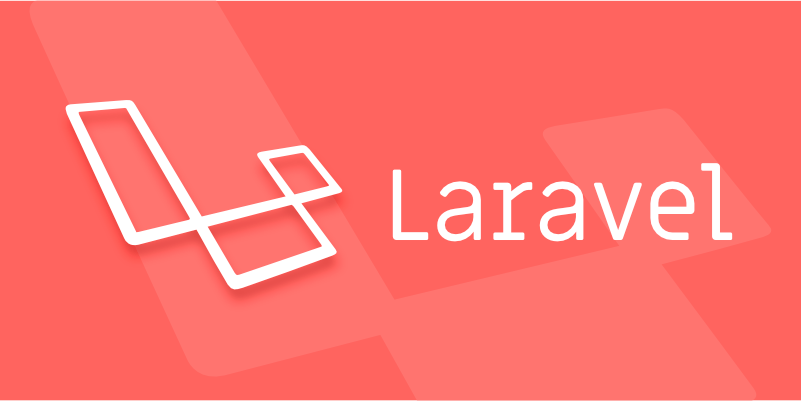The steps of Laravel seed filling database include creating and running a Seeder, generating real data in conjunction with the factory, and organizing multiple Seeders. 1. Create a Seeder You can use the Artisan command or edit DatabaseSeeder.php and define the insert data logic in the run() method. 2. Run Seeder Use the php artisan db:seed command to specify a specific class or combine the migration command php artisan migrate:fresh --seed to reset and refill. 3. Use the factory to generate dynamic data, create a factory file through php artisan make:factory, define the Faker data template in the factory, and call the factory() method in Seeder to create multiple records. 4. When organizing multiple Seeders, split them according to the model or function, such as UsersTableSeeder, CategoriesTableSeeder, etc., and call them in dependency order in the main DatabaseSeeder to ensure that the parent record is inserted before the child record.

When you're building a Laravel application, one of the most important steps during development is populating your database with realistic data for testing and demos. This is where Laravel seeders come in handy — they let you fill your tables with sample data quickly and consistently.

The key idea here is to make your test data look real enough that it helps catch edge cases, improves UI previews, and make debugging easier.

What Are Seeders and Why Use Them?
In Laravel, seeders are classes used to insert dummy or sample data into your database tables. They're especially useful during development and testing phases when you don't want to manually enter data every time you reset your database.
You might use them:

- To create default users or roles
- To pre-fill categories or settings
- To generate realistic test data for features like search or filters
Laravel's seeder system works well with factories , which help generate dynamic, randomized data instead of hardcoding values ??each time.
How to Create and Run a Seeder
Creating a seeder is straightforward. You can either use the Artisan command:
php artisan make:seeder UsersTableSeeder
Or edit the default DatabaseSeeder.php file located in database/seeders .
Once created, define what data should be inserted inside the run() method. For example:
public function run()
{
DB::table('users')->insert([
'name' => 'John Doe',
'email' => 'john@example.com',
'password' => bcrypt('password'),
]);
}To run the seeder:
php artisan db:seed
If you want to run a specific seeder class:
php artisan db:seed --class=UsersTableSeeder
You can also combine this with migrations using:
php artisan migrate:fresh --seed
This resets your database and re-runs all migrations and seeders — great for starting fresh during development.
Using Factoryes with Seeders for Realistic Data
Hardcoding data in seeders gets tedious fast. That's where model factories shine. Factory allow you to define templates for your models and generate multiple records easily.
First, create a factory (if not already done):
php artisan make:factory UserFactory --model=User
Then define how data should be generated in the factory file:
$factory->define(User::class, function (Faker $faker) {
Return [
'name' => $faker->name,
'email' => $faker->unique()->safeEmail,
'password' => bcrypt('password'), // default password for easy login
];
});Now in your seeder, you can do something like:
public function run()
{
\App\Models\User::factory(10)->create();
}This creates 10 users with realistic fake data, including names, emails, and passwords.
Some tips:
- Adjust the number passed to
factory()based on your needs - Chain methods like
create()ormake()depending on whether you want to save to the DB - Use Faker extensively for fields like addresses, phone numbers, dates, etc.
Organizing Multiple Seeders for Larger Projects
As your app grows, you'll likely have multiple tables to seed. It's good practice to separate seeders by model or feature.
For example:
-
UsersTableSeeder -
PostsTableSeeder -
CategoriesTableSeeder
Then, in your main DatabaseSeeder , call them in order:
public function run()
{
$this->call([
UsersTableSeeder::class,
CategoriesTableSeeder::class,
PostsTableSeeder::class,
]);
}This keeps things clean and lets you manage dependencies — like making sure categories exist before creating posts that reference them.
A few notes:
- Order matters! Make sure parent records are seen before child records
- Don't overdo it — only include what's necessary for basic functionality or testing
- Consider conditional seeing if you want to avoid duplicates in future runs
Final Thoughts
Using Laravel seeders with factories give you a powerful way to keep your development environment popular with realistic data without repetitive manual work. Whether you're setting up demo accounts, simulating activity, or just checking how lists and tables behave with more than one entry, seeders help you get there fast.
Just remember to update your seeders as your models evolve, and you'll always have a solid foundation for testing new features.
Basically that's it.
The above is the detailed content of Seeding Databases with Realistic Data Using Laravel Seeders. For more information, please follow other related articles on the PHP Chinese website!

Hot AI Tools

Undress AI Tool
Undress images for free

Undresser.AI Undress
AI-powered app for creating realistic nude photos

AI Clothes Remover
Online AI tool for removing clothes from photos.

Clothoff.io
AI clothes remover

Video Face Swap
Swap faces in any video effortlessly with our completely free AI face swap tool!

Hot Article

Hot Tools

Notepad++7.3.1
Easy-to-use and free code editor

SublimeText3 Chinese version
Chinese version, very easy to use

Zend Studio 13.0.1
Powerful PHP integrated development environment

Dreamweaver CS6
Visual web development tools

SublimeText3 Mac version
God-level code editing software (SublimeText3)
 Working with pivot tables in Laravel Many-to-Many relationships
Jul 07, 2025 am 01:06 AM
Working with pivot tables in Laravel Many-to-Many relationships
Jul 07, 2025 am 01:06 AM
ToworkeffectivelywithpivottablesinLaravel,firstaccesspivotdatausingwithPivot()orwithTimestamps(),thenupdateentrieswithupdateExistingPivot(),managerelationshipsviadetach()andsync(),andusecustompivotmodelswhenneeded.1.UsewithPivot()toincludespecificcol
 Sending different types of notifications with Laravel
Jul 06, 2025 am 12:52 AM
Sending different types of notifications with Laravel
Jul 06, 2025 am 12:52 AM
Laravelprovidesacleanandflexiblewaytosendnotificationsviamultiplechannelslikeemail,SMS,in-appalerts,andpushnotifications.Youdefinenotificationchannelsinthevia()methodofanotificationclass,andimplementspecificmethodsliketoMail(),toDatabase(),ortoVonage
 Understanding Dependency Injection in Laravel?
Jul 05, 2025 am 02:01 AM
Understanding Dependency Injection in Laravel?
Jul 05, 2025 am 02:01 AM
Dependency injection automatically handles class dependencies through service containers in Laravel without manual new objects. Its core is constructor injection and method injection, such as automatically passing in the Request instance in the controller. Laravel parses dependencies through type prompts and recursively creates the required objects. The binding interface and implementation can be used by the service provider to use the bind method, or singleton to bind a singleton. When using it, you need to ensure type prompts, avoid constructor complications, use context bindings with caution, and understand automatic parsing rules. Mastering these can improve code flexibility and maintenance.
 Strategies for optimizing Laravel application performance
Jul 09, 2025 am 03:00 AM
Strategies for optimizing Laravel application performance
Jul 09, 2025 am 03:00 AM
Laravel performance optimization can improve application efficiency through four core directions. 1. Use the cache mechanism to reduce duplicate queries, store infrequently changing data through Cache::remember() and other methods to reduce database access frequency; 2. Optimize database from the model to query statements, avoid N 1 queries, specifying field queries, adding indexes, paging processing and reading and writing separation, and reduce bottlenecks; 3. Use time-consuming operations such as email sending and file exporting to queue asynchronous processing, use Supervisor to manage workers and set up retry mechanisms; 4. Use middleware and service providers reasonably to avoid complex logic and unnecessary initialization code, and delay loading of services to improve startup efficiency.
 Managing database state for testing in Laravel
Jul 13, 2025 am 03:08 AM
Managing database state for testing in Laravel
Jul 13, 2025 am 03:08 AM
Methods to manage database state in Laravel tests include using RefreshDatabase, selective seeding of data, careful use of transactions, and manual cleaning if necessary. 1. Use RefreshDatabasetrait to automatically migrate the database structure to ensure that each test is based on a clean database; 2. Use specific seeds to fill the necessary data and generate dynamic data in combination with the model factory; 3. Use DatabaseTransactionstrait to roll back the test changes, but pay attention to its limitations; 4. Manually truncate the table or reseed the database when it cannot be automatically cleaned. These methods are flexibly selected according to the type of test and environment to ensure the reliability and efficiency of the test.
 Choosing between Laravel Sanctum and Passport for API authentication
Jul 14, 2025 am 02:35 AM
Choosing between Laravel Sanctum and Passport for API authentication
Jul 14, 2025 am 02:35 AM
LaravelSanctum is suitable for simple, lightweight API certifications such as SPA or mobile applications, while Passport is suitable for scenarios where full OAuth2 functionality is required. 1. Sanctum provides token-based authentication, suitable for first-party clients; 2. Passport supports complex processes such as authorization codes and client credentials, suitable for third-party developers to access; 3. Sanctum installation and configuration are simpler and maintenance costs are low; 4. Passport functions are comprehensive but configuration is complex, suitable for platforms that require fine permission control. When selecting, you should determine whether the OAuth2 feature is required based on the project requirements.
 Implementing Database Transactions in Laravel?
Jul 08, 2025 am 01:02 AM
Implementing Database Transactions in Laravel?
Jul 08, 2025 am 01:02 AM
Laravel simplifies database transaction processing with built-in support. 1. Use the DB::transaction() method to automatically commit or rollback operations to ensure data integrity; 2. Support nested transactions and implement them through savepoints, but it is usually recommended to use a single transaction wrapper to avoid complexity; 3. Provide manual control methods such as beginTransaction(), commit() and rollBack(), suitable for scenarios that require more flexible processing; 4. Best practices include keeping transactions short, only using them when necessary, testing failures, and recording rollback information. Rationally choosing transaction management methods can help improve application reliability and performance.
 Handling HTTP Requests and Responses in Laravel.
Jul 16, 2025 am 03:21 AM
Handling HTTP Requests and Responses in Laravel.
Jul 16, 2025 am 03:21 AM
The core of handling HTTP requests and responses in Laravel is to master the acquisition of request data, response return and file upload. 1. When receiving request data, you can inject the Request instance through type prompts and use input() or magic methods to obtain fields, and combine validate() or form request classes for verification; 2. Return response supports strings, views, JSON, responses with status codes and headers and redirect operations; 3. When processing file uploads, you need to use the file() method and store() to store files. Before uploading, you should verify the file type and size, and the storage path can be saved to the database.






